If it is true that artists love and wish to filter reality and describe it with their point of view, it is also true that in many pictorial movements its distortion and modification, carried out through the deconstruction of forms and the use of colors originally out of context, gave life in the Twentieth century to pictorial languages as fascinating as unpublished. In the Twenty-first century, today’s leading artist created a new, original and equally engaging one.
Luis Aranguri was born and lives in Peru, and from Latin America he takes and mixes various elements typical of artistic expression which marked the Modernism of the Twentieth century at a time when the detachment from Classical art had become so fundamental and urgent as to induce the Brazilian Tarsila do Amaral to give life to the Anthropophagus Movement, the one in which she literally intended to eat, cannibalize – hence the name of the artistic current – the previous art and the strong and incisive influences of the conquerors to recover a Latin American identity based on freedom of expression and the need to represent common life. The greatest artists of South America, from Fernando Botero to Diego Rivera, from Da Silva to Eduardo Kingman, have all chosen to highlight and tell stories linked to their territory, to the indigenous identity of their people, to the simple and humble life that was lived beyond the luxury of landowners with European origin but who did not constitute the majority of the Latin people. Luis Aranguri has the roots of his painting in Realism, from which he takes that tendency to paint clearly, to use chiaroscuro to give prominence to the subjects, to delineate the transition between light and shadow that defines and gives depth to the scene told.
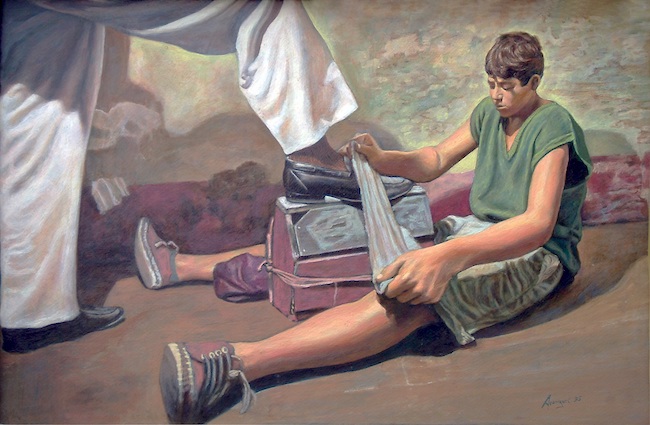
The tendency and need of this incredible artist is to highlight people of a low social level, portraying them in their serenity and dignity, almost as if life were enclosed in the secret of knowing how to accept what you have and be grateful for it; this feeling is evident in the work Lustrabotas (Shoeshiner) in which the boy is so concentrated in the performance of his role as to become almost deaf towards everything that revolves around him, the noise of the street, because what matters to him is to satisfy the customer. The morphological distortion, typical of Aranguri, here is barely mentioned, inserted discreetly in the context, almost seems to be just a projection in perspective, while in later and more recent works becomes the absolute protagonist of his way of looking at the world, of the curiosity of this original artist to observe things in a different way from how they normally are observed, of the question of understanding what details would be highlighted if the point of view were different.
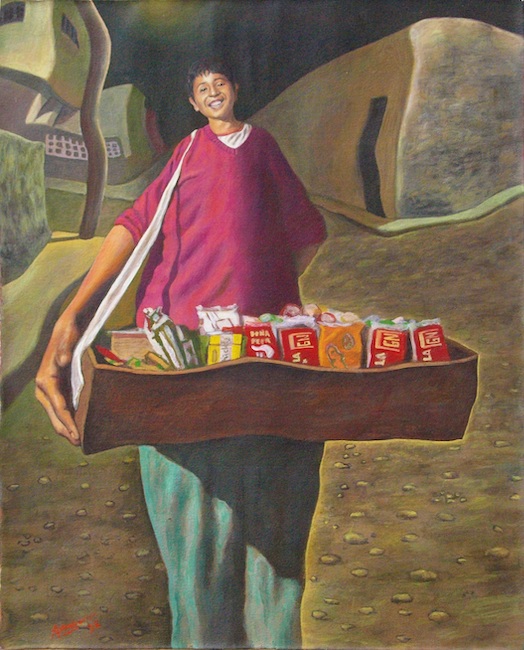
The change in reality is already much more evident in the work Vendedor de caramelos (Seller of candies) in which the boy in the lead, smiling and proud of the role that has been entrusted to him and happy to give joy to children who will soon rush to him, appears completely destructured by normal size, arms and legs are large and disproportionate to the face and top, perhaps to highlight the importance of the solidity of work tools, legs and hands, or perhaps to suggest, in a much more philosophical way, that appearances are not important, what really matters is the substance of things and people.
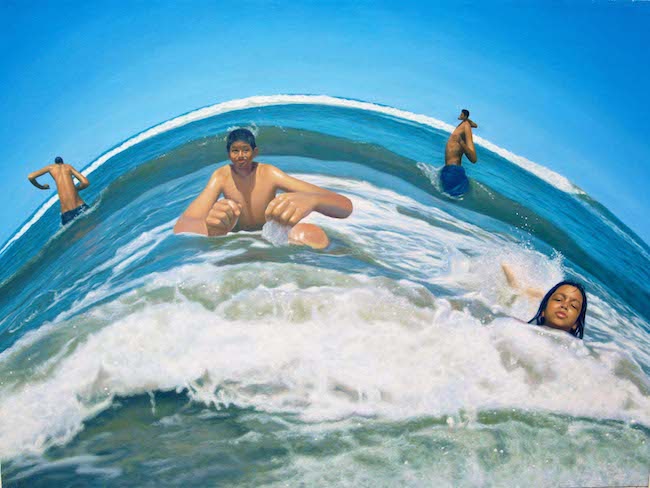
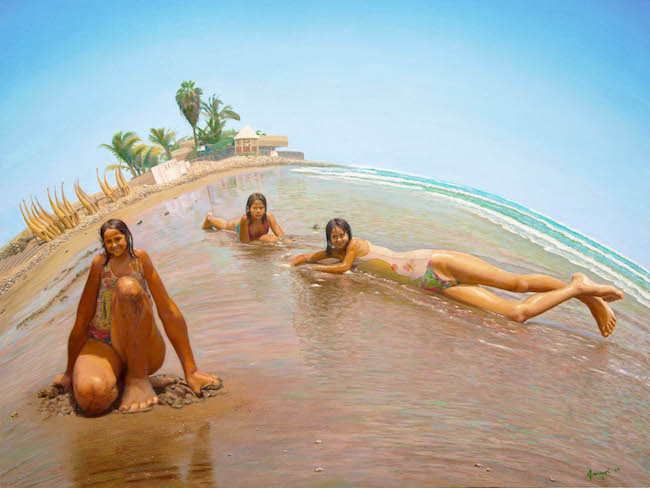
Luis Aranguri’s most recent production is that in which the modification of reality through the distortion of the convex mirror appears more tangible, that mutation of forms and proportions that arouses curiosity in the observer, who manages to discover, under the expert guidance of the artist, how reality can appear modified, how many details can emerge in a manner often more incisive than if it were observed in an ordinary way, as in the work Tres niñas en la orilla (Three girls on the shore) where the bungalow, which in a classical representation would remain of little relevance in the background, seems instead to be highlighted by that distortion that changes and modifies the perspective apparatus, while letting out the innocent happiness of the girls, true protagonists, who are also disproportionate and yet capable of involving with their smile, gaiety, joy that is found only in small things arrive clearly.

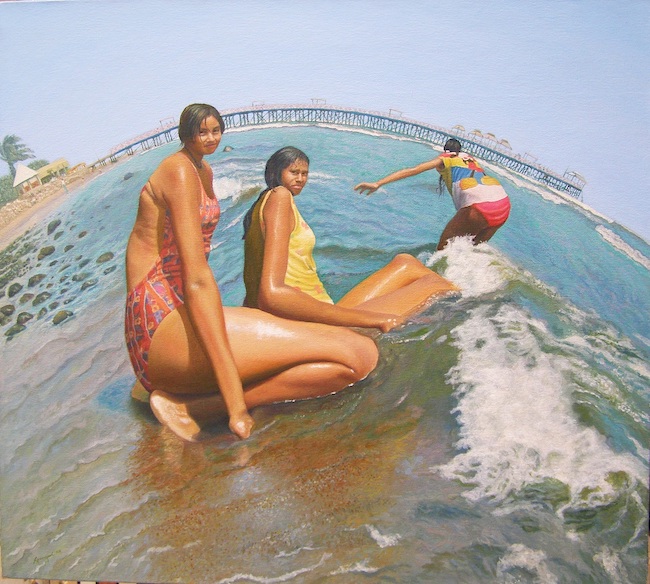
Aranguri plays with reality, he shapes it to his liking to give the observer a new, unique, recognizable and absolutely different perspective, a soloist voice in the world art scene that has been able to generate an absolutely new language and yet familiar, precisely because of his desire to describe scenes of common life, simple, free of any rush to pursue material, consumerist objectives.
LUIS ARANGURI-CONTATTI
Email: laranguri@yahoo.com
Facebook: https://www.facebook.com/luis.aranguri.35














